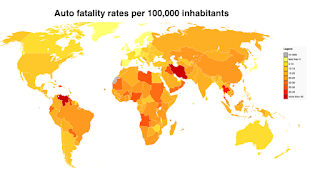Despite that statistic, vehicle manufacturers and technology companies are investing billions of dollars to develop fully autonomous capabilities. In fact, the first fully autonomous vehicles are due to hit the market before the end of this decade. But with such a high level of distrust, who will buy them? Perhaps the secret is to expand the reach of the category, rather than trying to convert those already in the category?
Unconventional Diffusion of Innovation?
Classic diffusion of innovation theory suggests that technology is adopted in stages, first by innovators, then early adopters, early majority and so on.This same theory suggests that innovators are risk takers, dreamers and adventurers. And early adopters are characterized as influencers who like to embrace change. But will that be the case for autonomous technology adoption? Or will the adoption curve look completely different?
Yesterday, I had a conversation with an automotive thought leader who suggested that the innovators would be commercial customers like Amazon and FedEx. Hardly the classic risk taking dreamer or adventurer. Yet the argument made a lot of sense because for these companies, efficiency in time and money are key purchase motivators, and they carry things, not people.
If the innovators are commercial, what might the first consumers who make up the early adopters and early majority look like?
Can we change behavior?
Every licensed driver in the world has probably hit an imaginary brake pedal while riding as a passenger. The fact is, we don't just distrust autonomous, we distrust giving up control of the wheel, and of our consequent fate in potentially life threatening situations.Thus, finding the early adopters who are open to change may be more difficult when the new technology is not just a new smartphone, but rather a perceived safety threat to themselves and their families.
Perhaps, rather than those who embrace change, might our early adopters actually be those who have nothing to change? Might they be those who have never driven a car before? Or those who have already abdicated control to others?
Sources of Early Adoption
So, autonomous vehicles could provide US automakers with an opportunity to tap into the unconventional/incremental target of non-drivers. Of course, since early autonomous technology will not be cheap, US automakers will need to marry their nascent ride sharing initiatives with their autonomous vehicles from day one, if they are to penetrate this segment.
There are indeed other segments of non-drivers that could, for the first time, be accessible to automakers. Disabled and older former drivers would also fall into this category, again, expanding the total market for new vehicles.





No comments:
Post a Comment